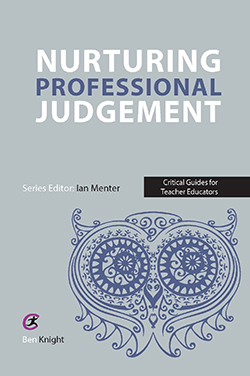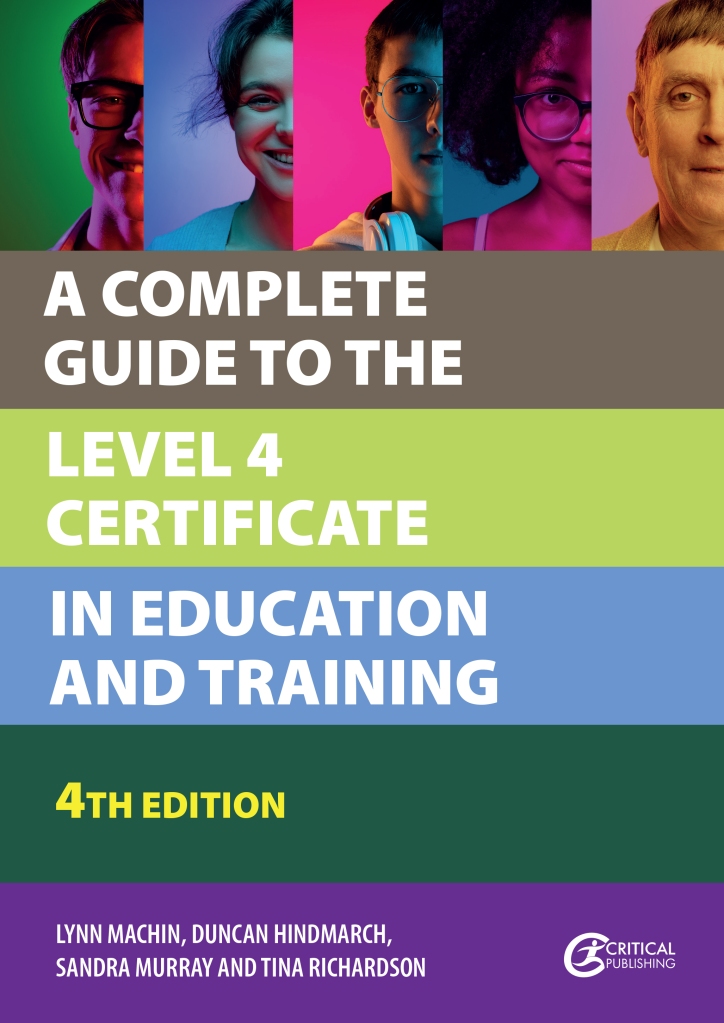This is an extract from Social Work Law: Applying the Law in Practice by Michelle Evans and Denise Harvey, ISBN 978-1914171802 and published by Critical Publishing Ltd
Introduction
This chapter starts with a disclaimer, and that is: my aim is not to make you a legal professional but rather to consider the law as it relates specifically to social work practice within the wider context of the English legal system. This is something I find myself saying to students at the beginning of the semester when teaching this law module as part of the social work programme. Often students believe that taking the social work law module is like doing a law degree in 12 weeks, when in fact it is about gaining knowledge of the law and how it applies directly to the work we do as social workers. Have you ever considered how people who are not trained in law come to the knowledge of it? Well, it is simple, it is by practice and legal advice from trained family lawyers whose job it is to practice law.
Having a degree is law is not a prerequisite to becoming a social worker
The Professional Capabilities Framework (PCF 5-Knowledge) outlines clearly at prequalifying entrance point students (including ASYE) should
‘Develop and apply relevant knowledge from social work practice and research, social sciences, law, other professional and relevant fields, and from the experience of people who use services We develop our professional knowledge throughout our careers and sustain our curiosity. As a unified profession, we develop core knowledge that relates to our purpose, values, and ethics. We also develop specific knowledge needed for fields of practice and roles. Our knowledge comes from social work practice, theory, law, research, expertise by experience, and from other relevant fields and disciplines. All social workers contribute to creating as well as using professional knowledge. We understand our distinctive knowledge complements that of other disciplines to provide effective services (British Association of Social Work 2018)
What is the Law?
Let us begin by understanding what the law is. Laws are essentially a complex system of customs, traditions, regulations, and rules which state how we must behave. There are 3 main components that make laws different from simple societal rules:
- Laws are set and established and enforced by government
- Laws are compulsory
- Laws involve consequences – which are enforced through the legal system (In the UK this is usually the courts though it can also be tribunals).
The law can also be defined as a system of rules and regulations to govern society, things made by judges, means by which people can seek justice and/or reparation, rules which keep society manageable, rules which serve to oppress and or control society (Partington, 2020)
Rules on the other hand denotes something about morally accepted behaviours that help people to understand how they should behave (Partington 2020):
Law making system in England and Wales
We often hear about laws being made in the Houses of Parliament; this is the main law-making body. The link between Parliament and the Court is that any legislation passed by Parliament is then accepted by the Court and understand that this take pre-eminence over any common law. (law that is made by the Judge through cases).
Head of state
The relationship between Parliament and the state is that most laws are exercised by the government in the name of the monarch. The Queen (Elizabeth II) is the current monarch who is the head of state. Her role primarily as the monarch is to remain legally responsible for any powers that the government exercises in law.
Structure
The UK Parliament comprises two separate Houses: The House of Commons and the House of Lords.
The House of Commons is a representative body, the membership of which is elected, and which has legislative powers. (i.e., Laws that the Commons has the sovereignty to make. The leader of the party in power (the prime minister) chooses his cabinet which is made up of members from that political party who are also members of the House of Common (MPs).
The House of Lords is not elected and is not a representative body. Most members of the House of Lords are life peers appointed under the Life Peerages Act 1958. Such peers are appointed by the monarch on the advice of the Prime Minister, who receives advice on who to put forward from a non-political Appointments Commission (Rabb, 2021).
The Law within the English Legal system
The law is embedded within the English legal system, what constitutes the English Legal system is:
- Law making bodies e.g., parliament, judiciary, legislature
- Those that enforce the law
- Institutions, processes, and personnel that contribute to the operation and enforcement the law
- Workings of the courts and tribunals
- Legal professionals
- Police, prosecutors and jurors
- Organisations that support access to justice e.g., Citizen Advice Bureau (CAB), legal aid, law shops, advocacy projects.
Sources of Law in English Legal System
The sources of law cover the principles that include legislation, common law, statutes, Bill and delegated legislation.
Legislation
A legislation is the law created by the legislature (people elected to make law for a state) It mainly deals with the Acts of Parliament. The UK Parliament is the body that has the power to pass laws that can be applied in all four countries. The UK Parliament consists of the House of Lords and House of Common.
Common law
Common law is the one that has been derived from judicial decisions of courts and similar tribunals. The English legal system of England and Wales is a common law one.
Statutes
Statutes are formally written down law which has been executed by a legislative body other than Parliament- Parliaments pass Acts.
Bill
A Bill is a proposed Law which had been discussed and debated in Parliament. It is then approved by Parliament and goes on to receive royal assent and becomes law.
Delegated legislation
It is an Act of Parliament that may give a minister or some other party the rights to make legal provisions.
Legal Jurisdiction
Legal Jurisdiction is defined as the extent of power to make legal decisions and judgements within a defined geographical area The Courts in England and Wales have legal jurisdiction to try case in relation to offences committed in the UK. They have a single legal system known as the English Legal System, Ireland, and Scotland as well as other areas which have their own legislation and are strictly not part of the UK e.g., Isle of Man, Channel Islands (‘Crown Dependencies’). Although Wales are currently looking at having their own jurisdiction as having law making legislature, but no jurisdiction presents as incongruent for Wales.
In England we only need to concern yourselves with English and European laws unless you go on to practice in other parts of the UK. (EU legislation currently applied until 31st of December 2020) England and Wales currently have the same laws though Wales is developing its own legal system. Scotland and Ireland have completely different legal systems (Scottish Law Online, 2021).
The Courts in England and Wales
If like me, you are a visual learner, describing the structure of the English Legal system would be lost on you, Figure 1 below offers a pictorial representation of the structure of the English and its different branches.
The Courts in England play an important role in the execution of the law in relation to different parts of the law. There are different courts that deal with different matters and as outlined below those that relate specifically to social work practice have been highlighted.
Magistrates’ Courts
These courts hear all criminal cases at first instance. Less serious cases and those involving juveniles are tried in the Magistrates’ Courts, as well as some civil cases. Magistrates deal with three kinds of offence: summary (less serious cases); either-way (cases that can be heard either in a Magistrates’ Court or before a judge and a jury in the Crown Court); and indictable-only (serious cases).
The Family Court
The Family Court was established in 2014 and sits within the Magistrates Court. It has national jurisdiction and brings all levels of family judiciary to sit together in the same court.
The County Court
There are approximately 160 county courts that hear cases within their geographic catchment area. These courts deal with civil (non-criminal and non-family) cases. The County Court hears (subject to exceptions) money claims with a value up to and including £100,000 and claims for damages for personal injury with a value up to £50,000. Cases are ordinarily held where the defendant resides.
The Crown Court
The Crown Court sits in centres around England and Wales. This court deals with indictable (meaning it can be tried by jury) criminal cases that are transferred from the Magistrates’ Courts, including serious criminal cases. The Old Bailey is a type of Crown Court.
The High Court
The High Court has jurisdiction for more serious and complex civil and family cases at first instance. It contains three divisions: Queen’s Bench, Family and Chancery. The Queen’s Bench Division is the biggest of the three High Court Divisions. Included within it are a number of specialist courts: the Admiralty, Commercial, Mercantile, Technology and Construction, and Administrative Courts. The Chancery Division deals with company law, partnership claims, conveyancing, land law, probate, patent, and taxation cases. This Division has three specialist courts: the Companies Court, the Patents Court, and the Bankruptcy Court. The area that relates to social work is the Family Division, this division deals with cases that pertain to children and appeals from family proceedings, cases which have been transferred from one of the lower courts (such as County Court or Family Court)
The Court of Appeal
The Court of Appeal and the High Court constitute the “senior courts” of England and Wales. The Court of Appeal is an appellate court and is divided into two divisions, Criminal and Civil. It is useful to understand this particular court as often in cases where parents appeal a decision made by the Local Authority it will be heard at this court.
The Supreme Court
The Supreme Court is the final court of appeal in the UK. It hears appeals on arguable points of law of public importance for the whole of the UK in civil cases, and for England and Wales and Northern Ireland in criminal cases. In Scotland, appeals can be made from the lower courts in criminal cases to the High Court of Justiciary. The Judicial Committee of the Privy Council, which comprises justices of the Supreme Court and some senior Commonwealth judges, is the final court of appeal for a number of Commonwealth countries, as well as the UK’s overseas territories, Crown dependencies and military sovereign bases (The Supreme Court Online, 2021).
Different Courts that relate to social work practice
Earlier in the chapter we identified the different courts within the English legal system. In this section we will take a closer look at the ones that most closely relate to social work practice. In children social work practice we are concerned with the functioning and use of the family court, with adults we are concerned with the court of protection, tribunals, magistrate, and crown courts (in criminal proceedings) whilst within youth justice we are concerned with magistrates’ court which becomes a youth court and the Crown Court.
Family Court
The family court deals with the following in relation to children and young people:
- Parental disputes over the upbringing of children
- Local authority intervention to protect children
- Decrees relating to divorce
- Financial support for children after divorce or relationship breakdown
- Some aspects of domestic violence
- Adoption
Court of Protection
We examine the Court of Protection in more detail in Chapter on Mental Capacity chapter. The Court of Protection deals with
Youth Court
The Youth Court is a criminal court that deals with young people who offend. A traditional magistrates Court then sits as a Youth Court. or more detail, see Chapter 5 Youth Justice.
The main criminal courts in England in Wales are:
- The Magistrates Courts
- The Youth Court – ages 10 – 17 (part of the Magistrates Court)
- The Crown Court.
All criminal offences are classified as one of the following:
- Summary only offences, which are offences that are only tried at a magistrate’s court and cannot be tried by a Jury) courts e.g., public order offences, minor criminal damage
- Either way offences, triable either in the Magistrates court of the Crown Court e.g., theft, deception
Indictable only offence, triable only in the Crown Court and serious enough offences that warrant a trial by Jury e.g., sex offences, grievous bodily harm, murder
Types of Law that relates to social work practice
As social work is a profession that deals with people as well as the state, this will invoke a different part of the law to come into effect. Phrases like public law and private law are common occurrences in social work language.
Public Law: deals with areas in which society, the government or the state has decided to interfere in a direct manner with the behaviour of individuals, for example care proceedings where the state has set parameters in the relevant legislation (Children Act 1989) for how children should be brought up. In extreme circumstances, the state in the form of the Local Authority will step in and take over the upbringing of children by accessing orders through the court that allows them to take on parental responsibilities. Many arguments for the interference of the state in family life surrounds the human right of that individual (Article 8 right to private and family life) and how much of a restriction or oppression the state poses if it interferes with it. The key in social work practice is about the balance of state control through the application of the law and safeguarding duties in legislation, and one’s human right to freedom and to live their life.
Public law cases brought by local authorities or an authorised person (currently only the NSPCC) and include matters such as:
- care orders, which give parental responsibility for the child concerned to the local authority applying for the order
- supervision orders, which place the child under the supervision of their local authority
- emergency protection orders, which are used to ensure the immediate safety of a child by taking them to a place of safety, or by preventing their removal from a place of safety
Public law cases must start in the Family Proceedings Courts. They may be transferred to the County Courts if it will minimise delay or enable the case to be merged with other family proceedings, or where the matter is unusually grave, complicated, or important (Judiciary UK, 2021).
Private Law: deals with mediating behaviour of individuals between themselves, for example a dispute between customer and shop over the quality of a purchase or a dispute between parents who have decided to separate or divorce.
Private law cases are brought by private individuals, generally in connection with divorce or the parents’ separation.
Order types include:
- parental responsibility
- financial applications
- special guardianship orders, which give a special guardian legal responsibility without removing legal responsibility from the birth parents.
- Section 8: Private law orders
- Any parent, guardian, or special guardian, stepparent with parental responsibility for the child, or person with a child arrangement order can apply for any section 8 order. There are four types of Section 8 orders available:
- Child Arrangement order: determines who a child lives with.
- Contact order requires the person with whom the child lives to allow the child to have contact with a named person; the order may set out the arrangements for contact. Child arrangement and contact orders can also be applied for by a person with whom the child has lived for at least three years, or any party to a marriage or civil partnership (whether or not subsisting) where the child is a child of the family.
- Prohibited steps order: these are used to prevent an action which could be exercised by someone with PR from being taken without the consent of the court, e.g., a prohibited steps order is made restraining the removal of the child from the county or from his home to prevent relocation.
- Specific issues order: these are usually used to resolve areas of disagreement relating to the exercising of parental responsibility.
These will be covered in more depth in Chapter 3 of the book.
Importantly, and perhaps an unnecessary added complication as is with the law, is that there is always an exception to the rule, which we shall call the cross over, where the two laws meet.
Cross-Over: in the case of divorce proceedings (which is private law as it is a dispute between two individuals) if there is concern about the children’s welfare, there are powers for the Local Authority to investigate within provisions of the Children Act 1989 (public law).
The overlap: an example
Mikel is 9 and following the suicide of his father his mother became clinically depressed and unable to care for him. She developed a serious problem with cannabis. Social workers found him poorly clothed, hungry, severely neglected and living in rented accommodation with no furniture or heating. His mother had sold all of the property in the accommodation and was working as a prostitute from the address. Mikel was removed from the home under the Children Act 1989 (sec 44) by means of an Emergency Protection Order (EPO) which was applied for through the family court and placed with foster carers (the welfare of the child sec1 Children Act 1989 and the need to protect him is public law). Investigations revealed a large and supportive family in Wales and maternal grandparents who were willing to care for him. They would need to apply for a child arrangement order CAO (CAO are private law Section 8 orders under the Children Act 1989) to allow him to live with them and given them Parental Responsibility (PR). This process would be managed through the family Court.



